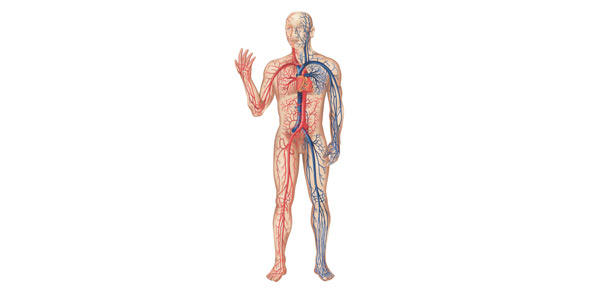Circulation

This quiz covers our lesson over circulation.
- 1.
Blood returning to the mammalian heart in a pulmonary vein drains first into the
- A.
Vena cava.
- B.
Left atrium.
- C.
Right atrium.
- D.
Left ventricle.
- E.
Right ventricle.
Correct Answer
B. Left atrium. -
- 2.
Which of the following would normally contain blood with the least amount of oxygen?
- A.
The left ventricle
- B.
The left atrium
- C.
The pulmonary veins
- D.
The pulmonary arteries
- E.
Capillaries that line the small intestine
Correct Answer
D. The pulmonary arteries -
- 3.
Systolic blood pressure is maintained by the
- A.
Left atrium.
- B.
Right atrium.
- C.
Left ventricle.
- D.
Right ventricle.
- E.
Semilunar valves in the aorta.
Correct Answer
C. Left ventricle. -
- 4.
Which of the following is not a similarity between open and closed circulatory systems?
- A.
Some sort of pumping device helps to move blood through the body.
- B.
Some of the circulation of blood is a result of movements of the body.
- C.
The blood and interstitial fluid are distinguishable from each other.
- D.
All tissues come into close contact with the circulating body fluid so that the exchange of nutrients and wastes can take place.
Correct Answer
C. The blood and interstitial fluid are distinguishable from each other. -
- 5.
In a system with double circulation,
- A.
Blood is pumped at two separate locations as it circulates through the body.
- B.
There is a countercurrent exchange within the gills.
- C.
Hemolymph circulates both through a pumping blood vessel and through body sinuses.
- D.
Blood is pumped to the gas-exchange organ and returning blood is then pumped through systemic vessels.
Correct Answer
D. Blood is pumped to the gas-exchange organ and returning blood is then pumped through systemic vessels. -
- 6.
Breathing rate will increase when ___________ CO2 in your blood causes a __________ in pH.
- A.
Increased, rise
- B.
Increased, drop
- C.
Decreased, rise
- D.
Decreased, drop
Correct Answer
B. Increased, drop -
- 7.
Fibrinogen is
- A.
A blood protein that escorts lipids through the circulatory system.
- B.
A cell fragment involved in the blood-clotting mechanism.
- C.
A blood protein that is converted to fibrin to form a blood clot.
- D.
A leukocyte involved in trapping viruses and bacteria.
Correct Answer
C. A blood protein that is converted to fibrin to form a blood clot. -
- 8.
In countercurrent exchange,
- A.
The flow of fluids (water and blood) in opposite directions maintains a favorable diffusion gradient along the length of an exchange surface.
- B.
Double circulation keeps oxygenated and deoxygenated blood separate.
- C.
Oxygen moves from a region of high partial pressure to one of low partial pressure, but carbon dioxide moves in the opposite direction.
- D.
The capillaries of the lung pick up more oxygen than do tissue capillaries.
Correct Answer
A. The flow of fluids (water and blood) in opposite directions maintains a favorable diffusion gradient along the length of an exchange surface. -
- 9.
How are arteries and veins different?
- A.
An artery has a thicker muscular and connective tissue layer than does a vein.
- B.
Veins do not have valves and arteries do.
- C.
Blood is under lower pressure in arteries than in veins.
- D.
Arteries carry blood to the heart; veins carry blood away from the heart.
- E.
Blood in arteries is oxygen rich; blood in veins is always oxygen poor.
Correct Answer
A. An artery has a thicker muscular and connective tissue layer than does a vein. -
- 10.
Most mollusks and arthropods, including insects,
- A.
Have a closed circulatory system.
- B.
Have an open circulatory system.
- C.
Have no interstitial fluid.
- D.
Have no cardiovascular system.
Correct Answer
B. Have an open circulatory system. -
Quiz Review Timeline +
Our quizzes are rigorously reviewed, monitored and continuously updated by our expert board to maintain accuracy, relevance, and timeliness.
-
Current Version
-
Jan 07, 2013Quiz Edited by
ProProfs Editorial Team -
Sep 30, 2009Quiz Created by
Staylor98
 Back to top
Back to top


